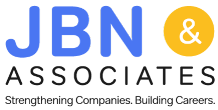The digital revolution, which has been reshaping the contours of various industries for decades, has fundamentally altered how we work. Gone are the days when a nine-to-five routine within the confined walls of an office building defined our professional lives. The COVID-19 pandemic further accelerated this shift, proving to organizations globally that remote work isn’t just feasible—it’s often more efficient. But with this newfound flexibility comes various challenges, especially when trying to gauge how to measure employee performance.
Effective employee performance evaluation is integral to the success of any business. It helps managers understand where improvements are needed, identify star performers, and ensure everyone is aligned with the company’s goals. In a traditional office setting, this often involved direct observation, face-to-face feedback sessions, and perhaps some key metrics on output. However, with employees now logging in from their homes or coffee shops halfway around the world, the old rulebook for effective performance appraisal seems obsolete in many ways.
The transition to remote work has highlighted the need for a more refined, adaptable, and digital-centric approach to assessing performance. We explore the complexities of this new landscape, introduce modern metrics of success, and offer insights on how businesses can stay ahead of the curve when determining the best methods of how to measure employee performance in this digital work-from-home age.
The Challenges of Evaluating Performance Remotely
The remote working environment, while bringing about numerous advantages like flexibility and increased access to global talent, has simultaneously introduced unique challenges when evaluating employee performance. These overt and subtle challenges require employers to rethink and redesign traditional employee performance metrics.
Absence of Physical Oversight: In a brick-and-mortar office, managers could often gauge employee engagement and productivity through direct observation – from noting their punctuality to watching their interactions with team members. Managers can no longer monitor employees in the workplace to determine whether they are performing at the expected level of their position, requiring new metrics to judge performance other than timeliness and an ability to get along with others.
Over-reliance on Digital Communication: With the elimination of face-to-face conversations, teams now lean heavily on emails, chats, and video calls. While these tools are effective, they also create the potential for miscommunication. The lack of non-verbal cues can lead to misunderstandings, which might inadvertently affect the perceived performance of an employee.
Different Working Hours and Environments: The beauty of remote work is that it allows for flexible schedules and diverse working environments. However, this also means employees might work in nontraditional settings or during hours when they’re most productive, which may not align with traditional working hours. Evaluating performance based on ‘visible’ online hours can be misleading.
Traditional Metrics May Not Apply: Performance indicators designed for in-office setups may not accurately capture the efficiency and effectiveness of remote workers. For instance, the number of hours logged into a system or time spent visibly online doesn’t necessarily equate to productive work.
Understanding these challenges is the first step for any organization seeking to adapt and evolve in today’s digital workplace. By recognizing these hurdles, companies can design more nuanced, empathetic, and accurate evaluation systems for their remote talent.
Key Performance Indicators (KPIs) for the Digital Age
The digital age demands a recalibration of how employers assess performance evaluation metrics. As remote work blurs traditional supervision and reporting lines, businesses must pivot towards a more results-driven evaluation approach. While businesses have long used Key Performance Indicators (KPIs) to evaluate performance, modern workplaces require reframing these metrics. Here are a few KPIs organizations should consider adopting to meet the needs of the current work-from-home landscape.
Task Completion Rate: The simplest yet most effective measure is assessing whether employees complete their assigned tasks within set timelines. This KPI directly indicates an individual’s efficiency and time management skills.
Quality of Work: While task completion is crucial, ensuring that the work meets the organization’s quality standards is equally important. Employers can gauge this through periodic reviews, feedback from colleagues, or client satisfaction levels.
Communication Efficiency: In remote work, effective communication is essential. This KPI assesses how well employees communicate their ideas, provide updates, and respond to questions and requests. Analyzing email response times or the clarity of written communications can be particularly useful here.
Responsiveness to Feedback: The digital age requires adaptability. Employees should not only be open to feedback but should also act upon it promptly. Without consistent daily monitoring, the ability to adapt and improve largely falls on the individual. This KPI gauges how quickly and effectively an individual incorporates feedback into their work.
Collaboration and Teamwork: Remote work can sometimes lead to silos that impede developing chemistry and the ability to work as a team. Ensuring that employees are still working harmoniously with their peers is essential. This can be measured by looking at joint project outcomes, feedback from team members, or the frequency and quality of collaborative interactions.
Self-initiative and Proactiveness: Without the traditional confines of an office, employees who take the initiative and display proactive behavior often stand out. This KPI can be assessed by looking at instances where employees have exceeded their defined roles, suggested improvements, or picked up tasks without waiting for instructions.
Willingness to Continuously Learn: The digital age is synonymous with rapid changes. Employees who continually upgrade their skills and stay updated with industry trends are invaluable. Employers can track participation in online courses, webinars, or workshops as indicators of a desire to grow and learn while on the job.
While the digital age presents unique challenges in employee evaluation, it also offers an opportunity to focus on what truly matters: results and growth. By adopting these modern KPIs, organizations can ensure a more holistic, objective, and fair assessment of their remote workforce.
The Role of Communication and Feedback
The significance of effective communication and timely feedback in the digital workplace cannot be overstated. Without casual hallway chats or impromptu desk discussions, structured communication becomes the linchpin that holds remote teams together.
Regular check-ins, whether daily progress reports or weekly reviews, ensure alignment with organizational goals and provide a platform for employees to voice concerns or share updates. These interactions bridge the physical distance, fostering a sense of belonging while bringing clarity to the tasks at hand.
Feedback, on the other hand, is the compass guiding employees towards improvement. In the remote setting, it’s vital to ensure feedback is precise, constructive, and frequent. Without the benefit of non-verbal cues, written or verbal feedback should be clear and actionable, helping employees understand areas of strength and those needing enhancement.
Effective communication and consistent feedback are cornerstones in the remote workplace. They drive team cohesion, provide clear direction, and foster individual growth.
Balancing Autonomy and Accountability
One of the most appreciated aspects of remote work is the autonomy it grants employees. With the freedom to structure their day, choose their work environment, and set their hours, remote workers can tailor their work lives to best suit their personal rhythms and responsibilities. However, if unchecked, autonomy can lead to a lack of accountability.
Striking a balance is critical. While autonomy can lead to increased job satisfaction and improved work-life balance, it mustn’t compromise the responsibility employees have towards their tasks and the organization.
Companies can maintain accountability by setting clear expectations from the outset. This involves defining roles, responsibilities, and deadlines to ensure employees know what’s expected of them. Periodic check-ins, performance metrics, and collaborative tools can help monitor progress without being overly intrusive.
It’s also essential to foster a culture of trust. Employees who feel trusted are more likely to uphold their commitments and deliver on their responsibilities. In the remote work paradigm, trusting employees to manage their time and tasks while ensuring they meet organizational goals is the optimal way to balance autonomy with accountability.
Mastering the Modern Workplace
The evolution of the workplace into digital and remote realms has ushered in a new era of opportunities and challenges as employers struggle to identify how to measure employee performance. Adapting to this landscape requires not just the implementation of new tools and strategies but a fundamental shift in mindset. Embracing modern KPIs, prioritizing effective communication, and balancing autonomy and accountability are crucial for organizations to thrive. As businesses navigate this digital age, they must remain flexible, responsive, and committed to continuous learning and adaptation. The future of work is here, and with the right approaches, it holds the promise of unparalleled growth and innovation.
Harness the potential of a remote workforce with the right talent on your side. At JBN & Associates, we specialize in identifying professionals adept at navigating the digital landscape and excelling in remote environments. Schedule a consultation with us today and empower your business with employees primed to meet the demands of the modern work-from-home horizon.






